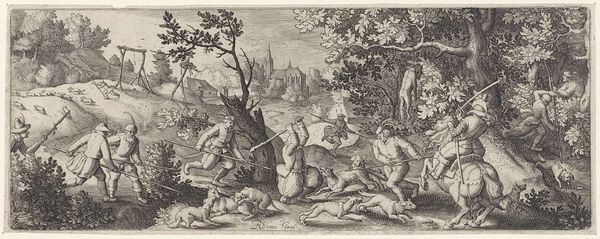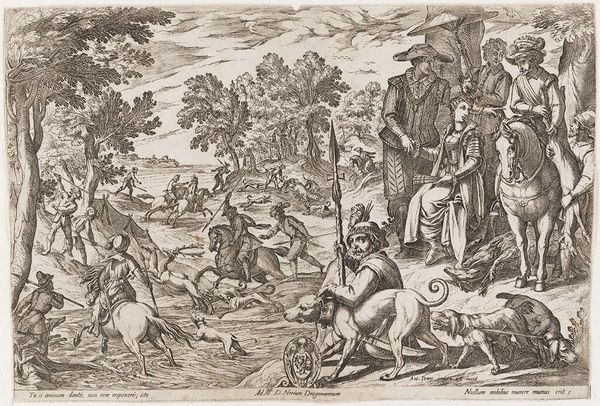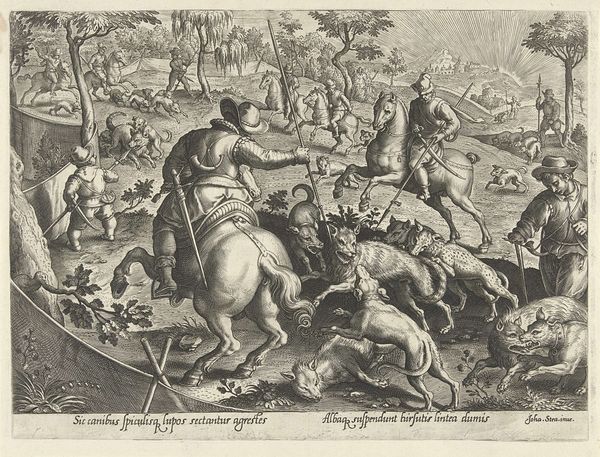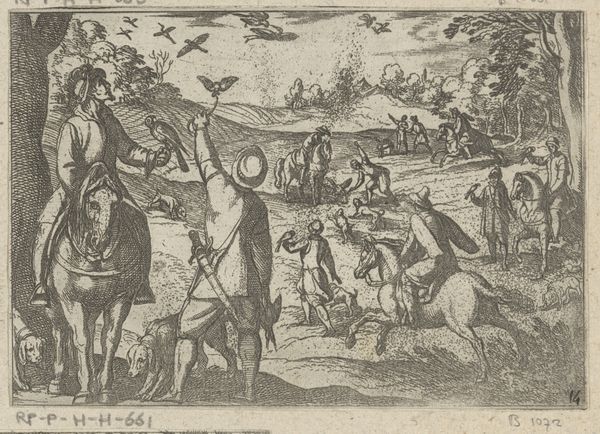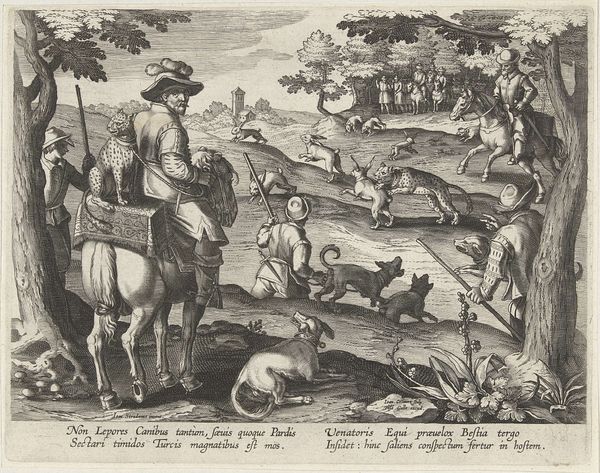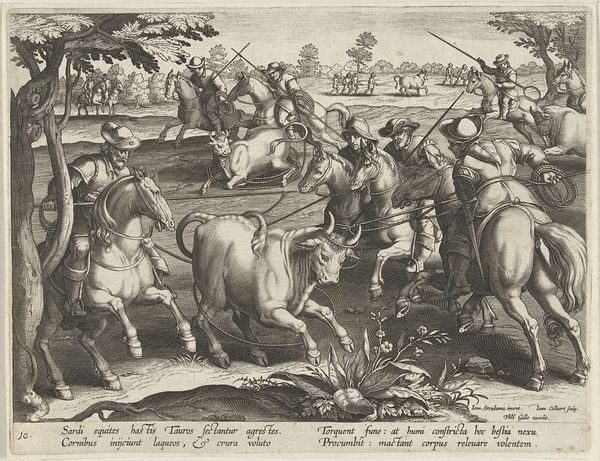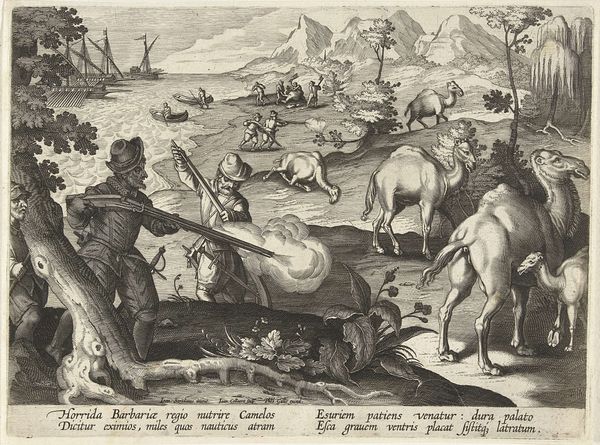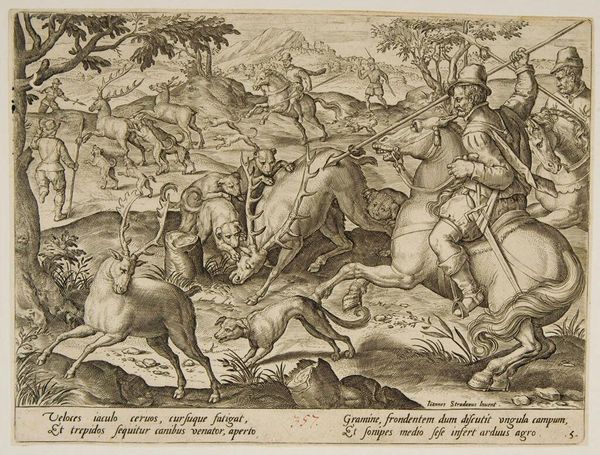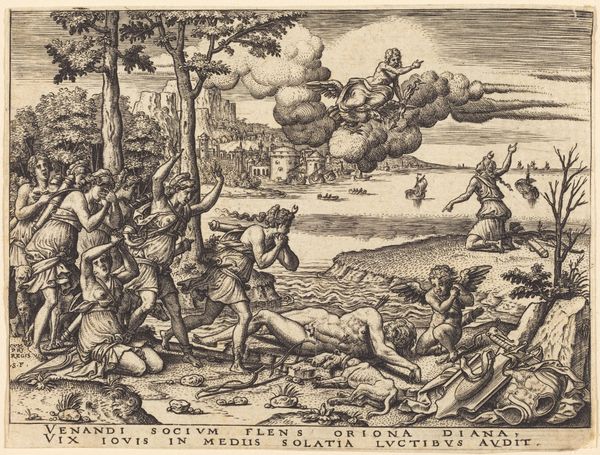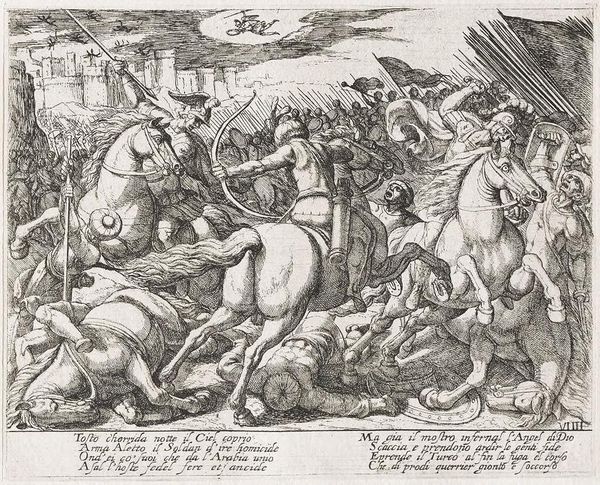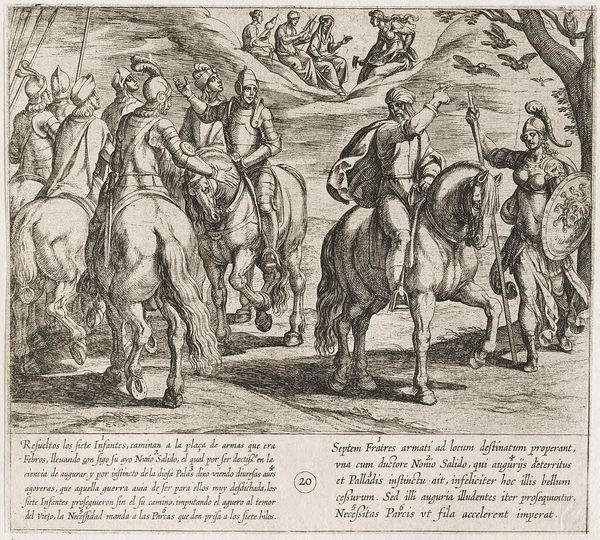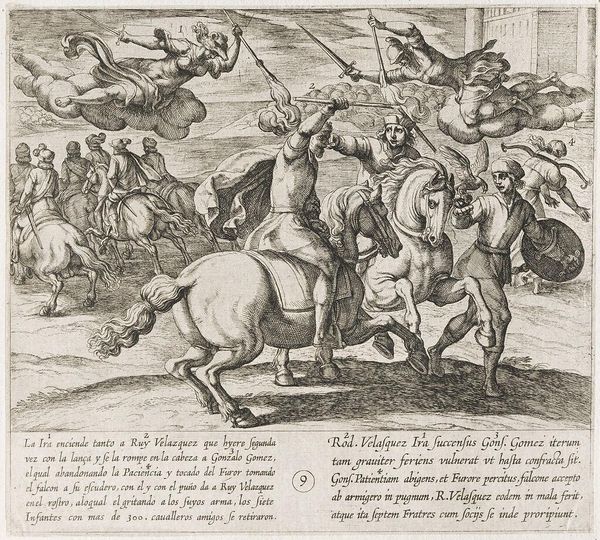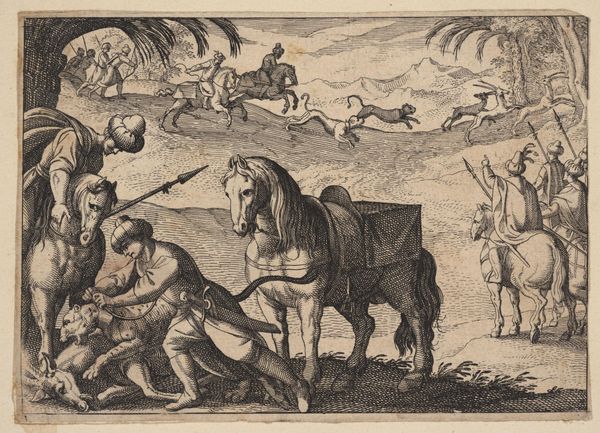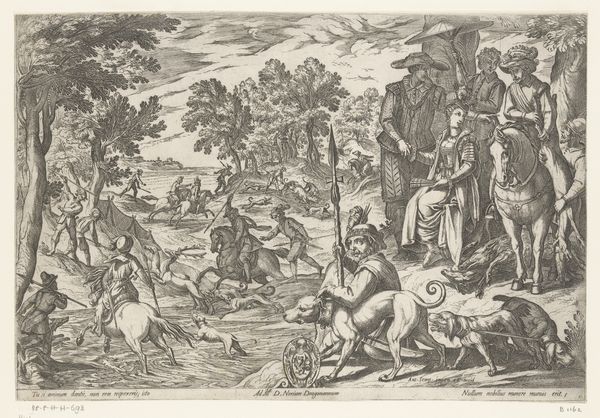
Dimensions: height 217 mm, width 299 mm
Copyright: Rijks Museum: Open Domain
Editor: This is “Cloelia steekt te paard de Tiber over,” a 1573 engraving by Pieter Jalhea Furnius at the Rijksmuseum. It’s so detailed! What strikes me most is how theatrical the scene is, everyone seems to be posing. What's your take on it? Curator: It’s interesting that you say "theatrical". Consider the public function of prints like these in the 16th century. They circulated widely, weren’t they? They weren't just art objects; they were disseminators of stories, of Roman history, in this case the tale of Cloelia escaping Porsena and swimming across the Tiber. Editor: That makes sense. It was a form of propaganda, almost? Curator: In a way, yes. These images reinforce classical values that the elites are keen to promote. Cloelia is portrayed as virtuous and brave, which would've resonated with viewers familiar with classical texts. Notice the depiction of the Tiber god in the lower right, and how the image presents Rome on either bank. What does that say about the message? Editor: So the composition itself, like, amplifies the symbolic weight of the narrative and reminds viewers of the glories of Rome itself, and what values it needs to uphold? Curator: Precisely. Prints helped solidify these cultural and political ideals by visually celebrating figures and events, influencing public sentiment. Think about where such prints might be displayed. Editor: It shifts my understanding entirely to see it less as art and more as a calculated social object with real influence on political opinion. Thanks! Curator: My pleasure. Looking closely reminds us that art rarely exists in a vacuum. It interacts with culture.
Comments
No comments
Be the first to comment and join the conversation on the ultimate creative platform.
